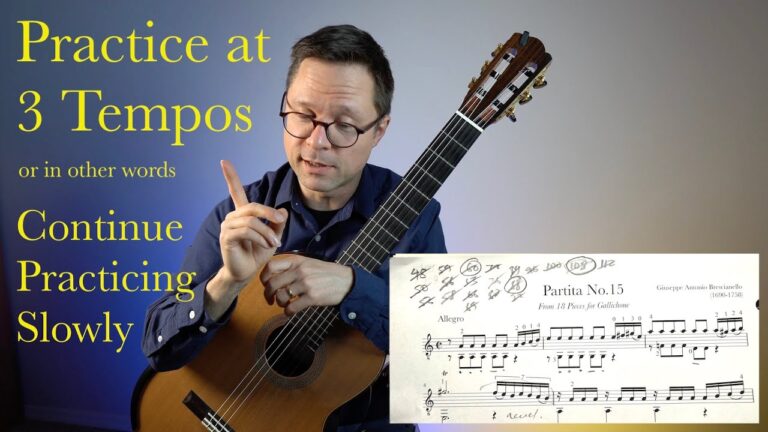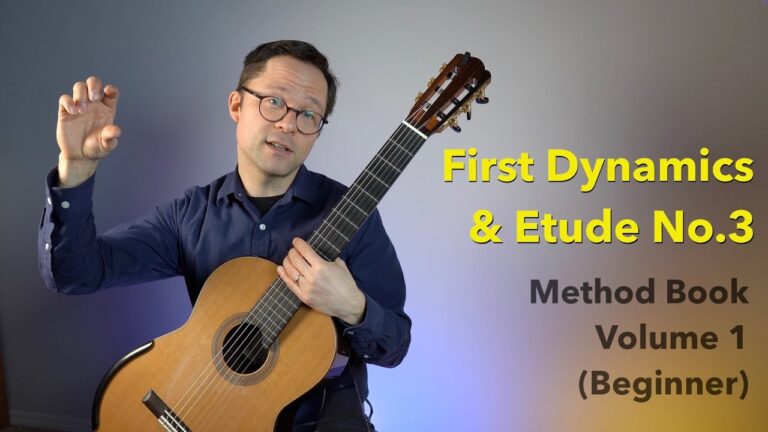No. 19 – Scale Etude (alternating i-m) for Classical Guitar from my technique book 20 Favorite Exercises (with TAB) but you can also check out my more extensive Classical Guitar Technique (Notation only, 122 pages). YouTube Video Lesson Link (4k)
This is an adaptation of Giuliani’s Exercise Op. 48, No. 4. This exercise was originally written with legato slur markings. It’s been rewritten here without the slurs to function as a scale etude with alternating i-m fingering (you could also use m-a). Check the original or online facsimile for the slurs if you prefer extra study.Play with alternating i-m fingers the entire time. Don’t use other fingerings even if they appear easier. Remember, you’re using this as an exercise rather than a concert piece, therefore, overcome the struggle of awkward string-crossings and never-ever repeat a finger. Do not add slurs. Aim for a perfect legato sound. Don’t make excuses or let yourself get away with anything non-legato. If a spot is giving you trouble in your legato you need to fix it and connect the notes. When I say legato I mean LEGATO! Think of the human voice or a flute as a model.
Check out more free video lessons at the lesson archive.





Hi Brad, in this study as well as some of your other lessons and Sheet Music I’ve noticed that you always use finger four of the left hand to play D in the second string on the third fret. Why is this? Is there a particular reason given that when you’re playing through a C scale in the first position your finger three is available for the second string of the third fret? Thanks for your help, John, Boston Massachusetts USA
Yes, there are many variables involved, I made a video about it here though: https://www.thisisclassicalguitar.com/lesson-using-4th-finger-beginners/
You are a very good teacher with your approach. I applaud you. Keep up the good work.
Thanks Dave, my pleasure!